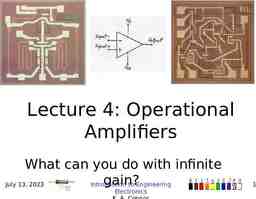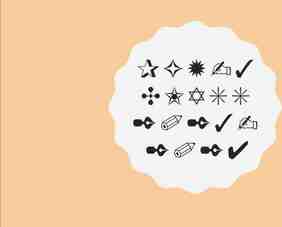Chapter 7: Chemical Reactions PEPS Rainier Jr/Sr High School
19 Slides117.78 KB
Chapter 7: Chemical Reactions PEPS Rainier Jr/Sr High School Mr. Taylor
Section 1: The Nature of Chemical Reactions A chemical reaction occurs when substances undergo changes to form new substances. Some physical changes may show that a reaction is occurring: change of state change of temperature change of energy
Section 1: The Nature of Chemical Reactions Chemical reactions have reactants and products. Reactants Products Things you start with Things you end up with Things that are used up Things are created new.
Section 1: The Nature of Chemical Reactions Chemical bonds store energy. Energy is required to break a chemical bond (activation energy). Energy is conserved in any chemical reaction (energy is neither created nor destroyed.)
Section 1: The Nature of Chemical Reactions When the new chemical bonds form in the new compound: If more energy is stored in the new bonds it is an endothermic reaction. (The extra energy has to be absorbed from the surrounding environment cooling it off.) If less energy is stored in the new bonds it is an exothermic reaction. (The energy is given off in the form of heat or light or electricity or .)
Section 2: Chemical equations A chemical equation uses symbols to represent a chemical reaction and shows the relationship between the reactants and the products of a reaction. CO2 H2O C6H12O6 O2 In words: carbon dioxide and water react to form glucose and oxygen gas.
Section 2: Chemical equations Law of Definite Proportions: compounds ALWAYS have the same elements in the same proportions. (H2O; water always has 2 Hydrogen atoms and 1 oxygen atom.) Law of Conservation of Mass: Mass is neither created nor destroyed in a chemical reaction. (If you start with an atom in the reactants, it MUST be accounted for in the products.
Section 2: Chemical equations Balancing CO2 6CO2 Chemical Equations: H2O C6H12O6 O2 H2O C6H12O6 O2 6CO2 6H2O C6H12O6 O2 6CO2 6H2O C6H12O6 6O2
Section 3: Reaction Types Synthesis Reaction: Two or more simple reactants combine to make a new substance. General formula; A B AB 2Na Cl2 2NaCl
Section 3: Reaction Types Decomposition Reaction: A single substance breaks down into two or more simpler substances. General Formula AB A B H2O 2H2 O2
Section 3: Reaction Types Combustion Reaction: OXYGEN combines with other substances to form new substances. General formula: A O AO 2 2 CH4 O2 CO2 H2O (Methane burns in the presence of oxygen to form carbon dioxide and water.)
Section 3: Reaction Types Single replacement/displacement reactions: an element combines with a compound to form a new, different compound and a different element. General formula: AB C A BC 3CuCl2 2Al 2AlCl3 3Cu
Section 3: Reaction Types Double replacement/displacement reactions: an compound combines with another compound to form 2 new and different compounds. General formula: AB CD AD BC NaOH HCl NaCl HOH
Section 4: Reaction Rates and Equilibrium Reactions occur at different speeds. Reaction rates can usually be altered Reactions occur when two particles collide with enough energy to make a reaction happen (Collision theory). If you can increase the energy of the collision, you can increase the rate of the reaction.
Section 4: Reaction Rates and Equilibrium How you can increase the energy of the particles: Increase the Increase the substances Increase the vessel. Increase the surface area concentration of the pressure of the reaction temperature
Section 4: Reaction Rates and Equilibrium A Catalyst is a substance that can change the rate of a reaction without being changed itself or altering the reaction. Catalysts lower the initial activation energy so the reaction proceeds more quickly. Biologic catalysts are called enzymes. Enzymes hold substances together in the right orientation so the reaction can take place.
Section 4: Reaction Rates and Equilibrium Equilibrium systems: some reactions are readily reversible. When an equilibrium system reaches a “steady state”, it is said to be in equilibrium. Change is happening, but equal in all directions. CO2 H2O H2CO3 H HCO3-
Section 4: Reaction Rates and Equilibrium LeChâtelier’s Principle: if a change is made in an equilibrium reaction the system will shift to oppose the change until a new equilibrium is reached. CO2 H2O H2CO3 H HCO3-
























